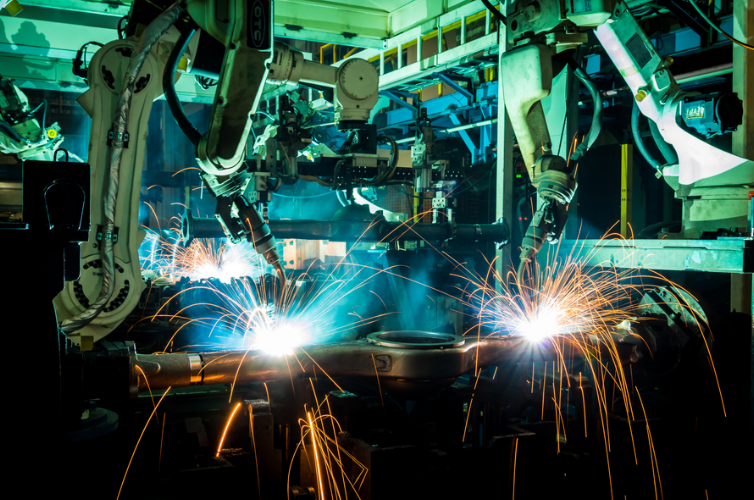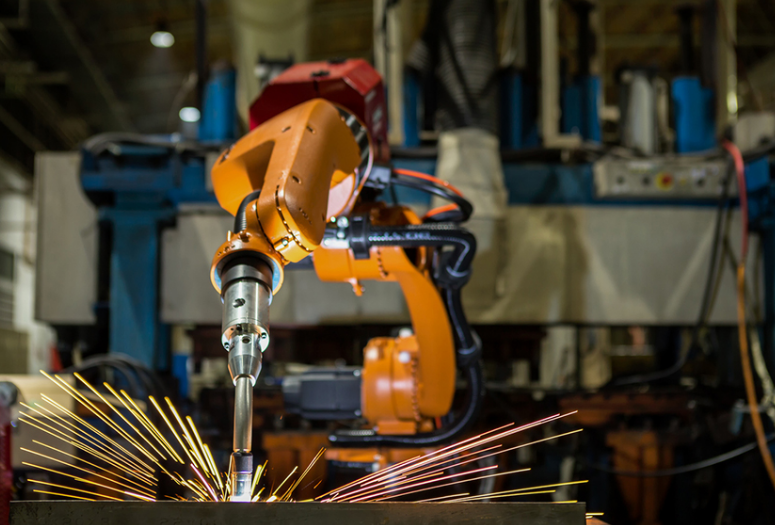Overview of MIG Welding Automation
MIG welding automation has revolutionized the welding industry by introducing efficiency and precision. This process involves using advanced machinery to perform Metal Inert Gas (MIG) welding tasks, traditionally done by hand. The core concept lies in programming robotic arms or machines to carry out welding operations under minimal human supervision. This shift not only speeds up the welding process but also significantly improves the consistency of the welds produced.
Introduction to Automated MIG Welding
Automated MIG welding integrates robotic systems to handle the welding gun and the workpiece. These systems use pre-programmed instructions to execute precise welding paths, ensuring uniformity and accuracy. Advanced sensors in these systems detect variations in welding parameters, allowing for real-time adjustments. This automation is particularly beneficial in repetitive or large-scale production settings where manual welding would be time-consuming and potentially less accurate.

Advantages of Automating MIG Welding
One of the key benefits of automating MIG welding is the remarkable increase in production speed. Automation can enhance welding speeds by up to 50%, depending on the application and system used. This increase directly translates to higher throughput and efficiency in production lines. Moreover, automated systems consistently maintain high-quality welds, reducing the need for rework and material wastage. The precision of automated MIG welding also allows for better control over welding parameters like voltage, current, and wire feed speed, contributing to the overall quality of the weld. Additionally, automating welding processes can reduce labor costs and minimize the risk of injuries, as the automated systems can work in environments that might be hazardous for human workers.
In terms of cost, while the initial investment in automated MIG welding systems can be substantial, the long-term savings in labor, materials, and improved production efficiency often justify the expense. The lifespan of these systems varies based on usage and maintenance but typically ranges from 5 to 10 years, offering a significant period of return on investment.
Technologies in MIG Welding Automation
The field of MIG welding automation is advancing rapidly, incorporating a variety of technologies designed to enhance efficiency, precision, and safety. These innovations range from sophisticated robotic systems to intricate control mechanisms, each playing a pivotal role in streamlining welding processes.
Robotic MIG Welding Systems
Robotic MIG welding systems represent a major technological leap in automation. These systems typically consist of a robotic arm equipped with a MIG welding gun, controlled by advanced software. They can handle complex welding tasks with high precision and repeatability. The power of these systems lies in their ability to work continuously for long hours, maintaining consistent welding quality throughout. They are particularly effective in automotive and aerospace industries, where precision and repeatability are crucial. The cost of these systems can vary widely, starting from $15,000 to over $100,000, depending on their capabilities and specifications.
Advanced Control Systems for Precision
To achieve the highest level of precision in MIG welding, advanced control systems are integral. These systems use real-time feedback and adaptive control techniques to adjust welding parameters like current, voltage, and wire feed speed. This adaptability ensures optimal welding conditions even when dealing with variable materials or complex shapes. For example, some control systems can detect changes in material thickness and automatically adjust the welding parameters to maintain consistent quality. The efficiency of these systems significantly reduces material wastage and increases the overall speed of the welding process. The integration of AI and machine learning in these systems is also becoming more common, allowing for predictive maintenance and further enhancements in welding quality.
Challenges in Automating MIG Welding
Automating MIG welding presents unique challenges, primarily stemming from the complexity and variability inherent in welding tasks. These challenges require innovative solutions to ensure the efficiency and effectiveness of the automated systems.
Dealing with Complex Welding Paths
One of the primary challenges in automating MIG welding is managing complex welding paths, especially in components with intricate designs or irregular shapes. Robotic systems must be highly flexible and equipped with advanced sensing technologies to navigate these paths accurately. Programming such paths demands a high level of expertise and often involves sophisticated software capable of 3D modeling and path simulation. The precision required for complex paths also necessitates regular calibration and maintenance of the equipment, adding to the operational costs.
Ensuring Consistent Weld Quality
Maintaining consistent weld quality across various projects and materials is another significant challenge. Variations in material properties, thickness, and joint design can greatly affect the welding process. Automated systems must have advanced monitoring and control mechanisms to adjust the welding parameters in real-time. This includes maintaining optimal welding speeds, which can range between 6 to 12 inches per minute, depending on the material and weld type. Additionally, environmental factors such as temperature and humidity can impact weld quality, requiring further adaptations in the welding process.
Application Areas for Automated MIG Welding
Automated MIG welding has found its place in numerous industries, each benefiting from its precision, efficiency, and reliability. These applications highlight the versatility and adaptability of automated MIG welding in various sectors.
Automotive Industry Use Cases
In the automotive industry, automated MIG welding plays a crucial role in manufacturing processes. Here, precision and speed are key, and automated welding systems deliver both. They are extensively used for assembling vehicle frames and body parts, ensuring strong and consistent welds critical for vehicle safety and integrity. The ability to operate continuously allows for increased production rates, often reaching speeds that manual welding cannot match. For instance, a typical automated welding line in a car manufacturing plant can complete a welding task in a few seconds, significantly reducing the overall production time of a vehicle.
Aerospace Industry Adaptations
The aerospace industry presents unique challenges for welding due to the critical nature of the welds and the often complex and lightweight materials used. Automated MIG welding systems in this sector are highly specialized, capable of handling high-strength alloys and composites used in aircraft manufacturing. These systems offer precise control over welding parameters, essential for maintaining the integrity of aerospace components. The precision of automated welding is particularly beneficial for fabricating engine parts and structural elements of aircraft, where even minor flaws can have serious consequences.
Future of MIG Welding Automation
The future of MIG welding automation is poised for significant advancements, driven by technological innovation and the evolving needs of various industries. These developments promise to further enhance the capabilities and applications of automated MIG welding.

Innovations in Welding Robotics
Innovations in welding robotics are central to the future of MIG welding automation. These advancements focus on increasing adaptability, precision, and efficiency. Future robotic welding systems are expected to feature more advanced sensors and AI-driven algorithms for real-time decision-making, allowing for greater adaptability to different materials and welding conditions. For example, upcoming robotic welders might incorporate 3D vision systems for more accurate joint identification and seam tracking, significantly enhancing the welding quality. Additionally, developments in collaborative robots (cobots) are anticipated, where robots work alongside human operators, combining the precision of automation with the adaptability and decision-making skills of humans.
Predictive Maintenance and AI Integration
Predictive maintenance, powered by AI integration, is set to play a vital role in MIG welding automation. By analyzing data from sensors and past welding operations, AI algorithms can predict equipment failures before they occur, minimizing downtime and maintenance costs. This approach not only extends the lifespan of welding equipment but also ensures consistent weld quality. AI integration in welding systems is also expected to optimize welding parameters for different projects automatically, further improving efficiency and reducing material waste. The incorporation of machine learning techniques will enable these systems to learn from past operations, continually improving their performance over time.
Economic and Environmental Impacts
The adoption of automated MIG welding has profound economic and environmental impacts, influencing both industry practices and sustainability efforts. These impacts highlight the dual nature of technological advancement in industrial processes.
Cost-Benefit Analysis of Automation
A thorough cost-benefit analysis of automation in MIG welding reveals a complex picture. Initially, the investment in automated welding equipment can be substantial, often ranging from $50,000 to $200,000, depending on the system’s sophistication. However, this investment typically pays off in the long run through increased productivity, reduced labor costs, and lower rates of error and rework. Automated systems can enhance welding speeds by up to 70%, directly translating to higher throughput. Furthermore, the precision of automated welding reduces material wastage, contributing to cost savings. Over a system’s lifetime, which can extend up to 10 years with proper maintenance, these savings can significantly outweigh the initial outlay.
Environmental Benefits and Concerns
Automated MIG welding also presents environmental benefits and concerns. On the positive side, the precision and efficiency of automated systems lead to reduced material waste and lower energy consumption per weld, contributing to sustainability. However, the production and disposal of these advanced systems have an environmental cost, including the use of rare materials and the generation of electronic waste. Balancing these factors is crucial for achieving sustainable industrial practices.


